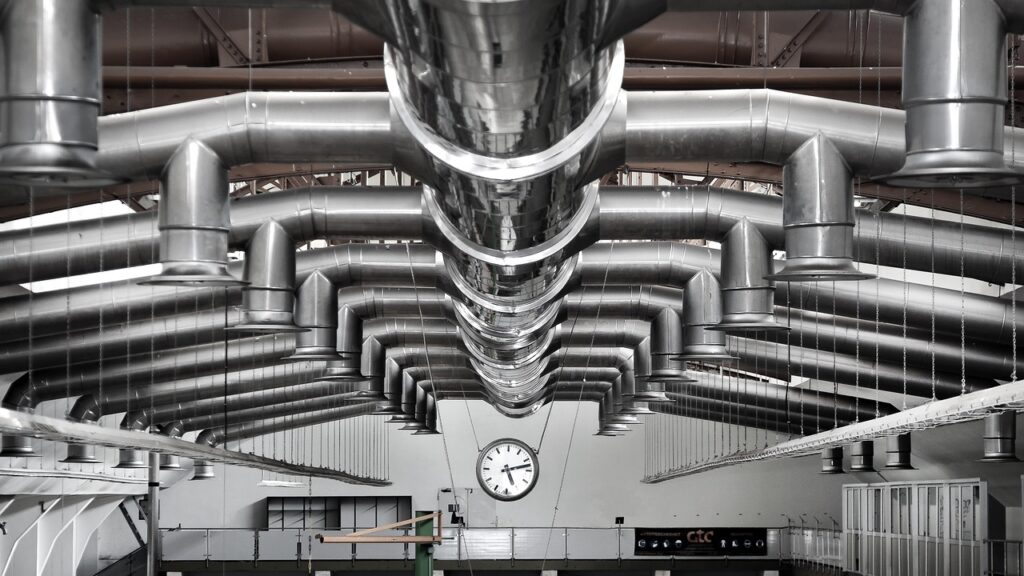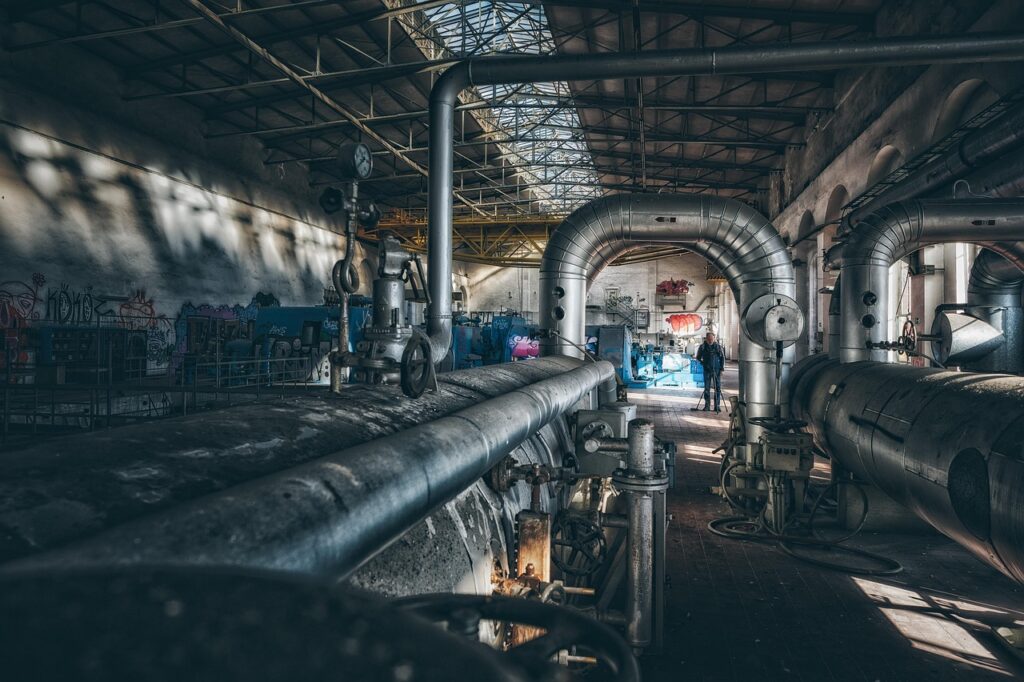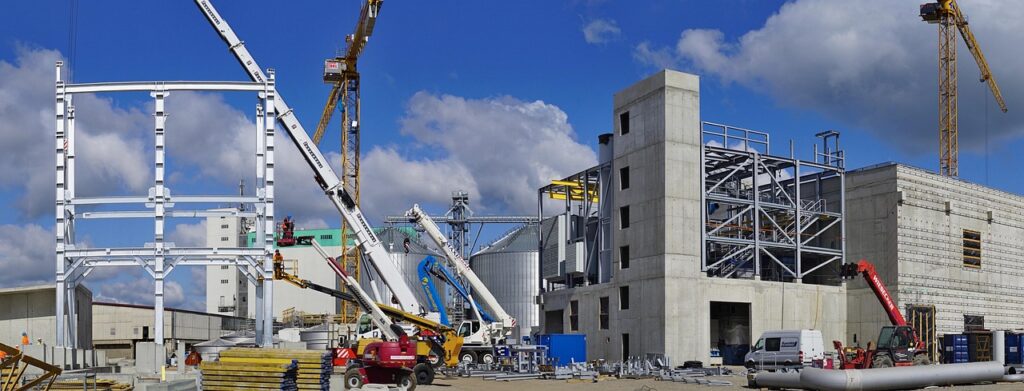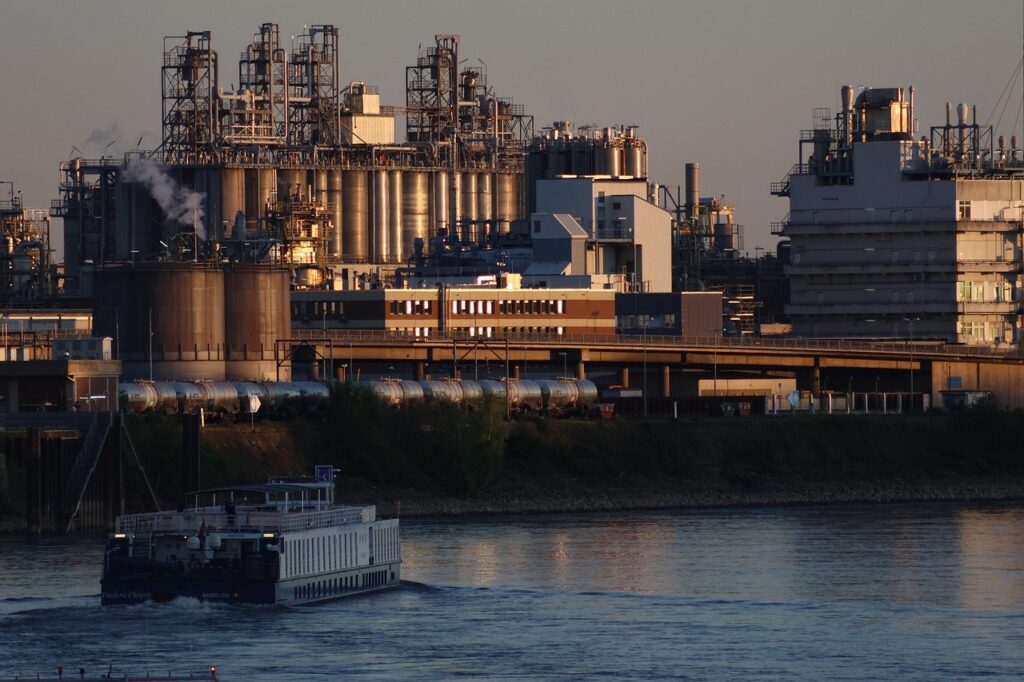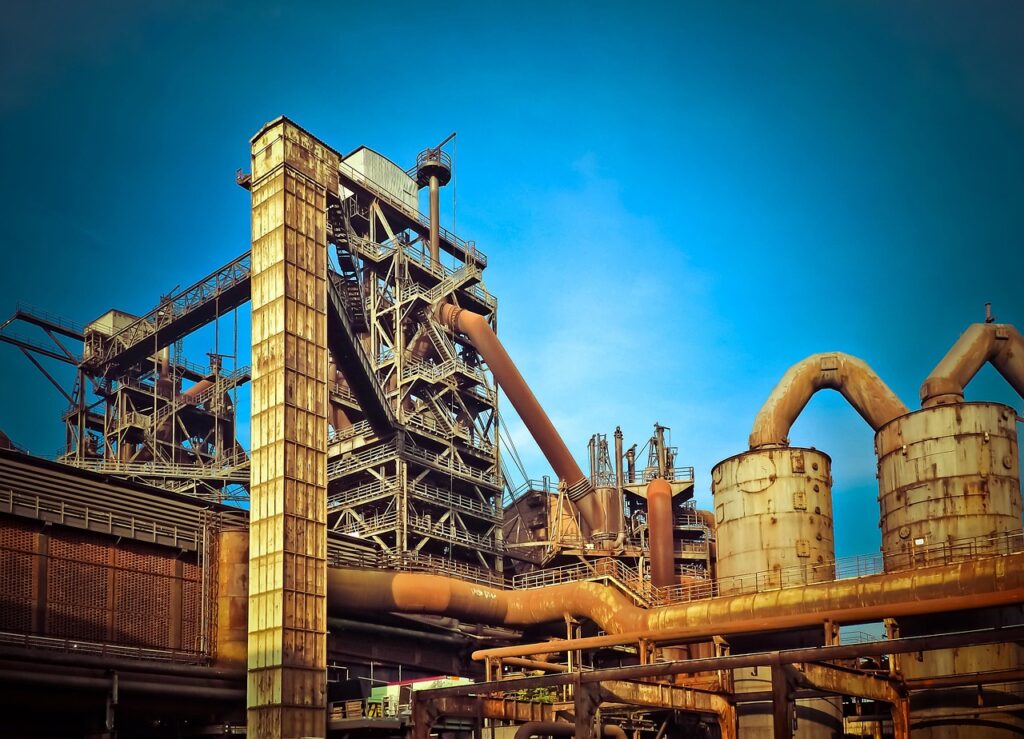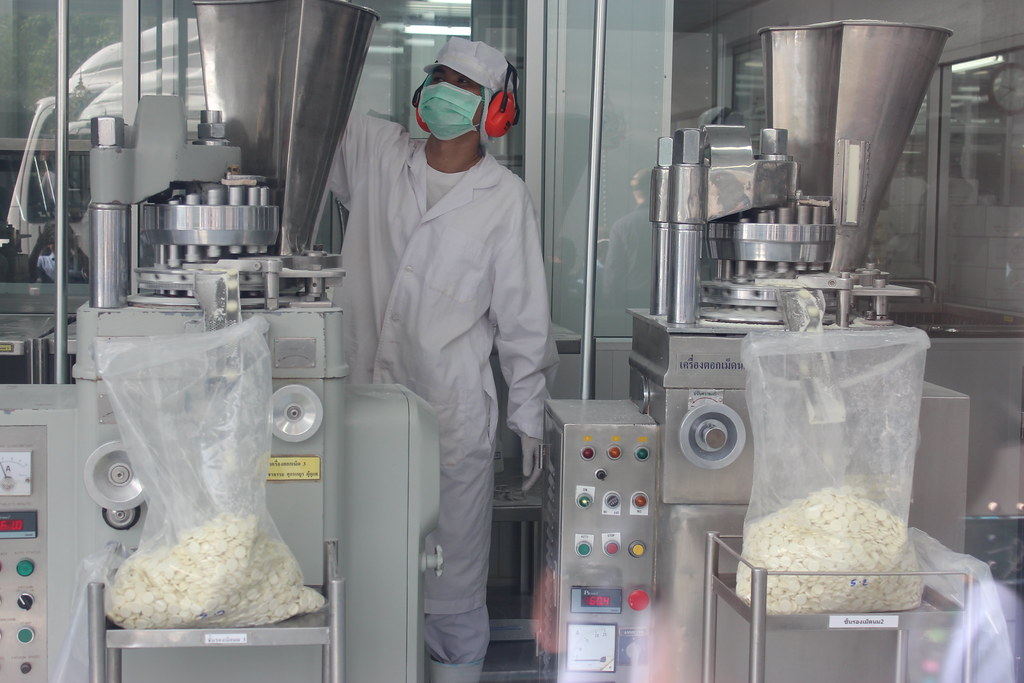
There’s a certain romance in the echoes of industrial might, a nostalgic hum that resonates through the fabric of America’s blue-collar towns. For generations, the clang of machinery, the scent of fresh-cut lumber, or the rhythmic thrum of looms weren’t just noises or odors; they were the very pulse of communities, signaling employment, purpose, and a pathway to the American dream. These factories, whether massive complexes or humble workshops, stood as pillars of local economies, providing livelihoods and defining the character of countless places across the nation.
However, the landscape of American manufacturing has undergone a profound transformation over the past forty years, shifting away from its industrial bedrock towards a more service-oriented economy. From its all-time peak of 19.6 million employees in June 1979, manufacturing employment dwindled to 12.8 million by June 2019, representing a staggering 35 percent decline. This seismic shift didn’t just alter national economic statistics; it dramatically reshaped the destinies of individuals and the very soul of the blue-collar towns that once thrived on these industries, leaving behind a complex tapestry of resilience, loss, and adaptation.
We embark on a journey to uncover the stories of these twelve American industries, once vibrant epicenters of employment, now largely silent or significantly reduced in their hiring capacity. Through the lens of data and evocative narratives, we’ll explore the specific sectors that bore the brunt of this transition, examining the forces that led to their decline, the unique challenges they faced, and in one intriguing case, an industry that managed to defy the broader trend of contraction. It’s a look at the enduring legacy of American ingenuity, the hard work of generations, and the profound changes that have swept across our industrial heartland.
1. **Wood Products and Furniture**In many American towns, the timber industry and its offshoots, such as furniture manufacturing, were cornerstones of the local economy. The forests provided raw materials, and skilled craftspeople transformed them into the furnishings that filled homes and offices across the country. This sector represented not just production, but a tangible connection to natural resources and traditional craftsmanship, fostering communities centered around these essential trades.
For a significant period, from June 1979 until April 2000, the wood products and furniture industry experienced what could be described as cyclical job gains and losses. This ebb and flow suggested a responsiveness to economic cycles, particularly in housing and consumer spending. It was an industry that, despite fluctuations, maintained a substantial presence, providing stable, if not consistently growing, employment opportunities for many.
However, the turn of the millennium marked a dramatic shift. Following its employment peak in April 2000, the industry began a precipitous decline, losing half a million jobs. This staggering figure represents a 60 percent reduction from its peak workforce. The impact on towns reliant on lumber mills and furniture factories would have been immense, often leaving behind empty plants and a skilled workforce struggling to find new employment.
The forces behind this decline are multifaceted. Globalization brought cheaper imported goods, changing consumer tastes favored different materials or styles, and automation gradually reduced the need for manual labor in certain processes. The vanishing hum of saws and the quieted workshops speak to an industry fundamentally reshaped, leaving us to ponder the beauty and utility that once emanated from these now-quieted factories. From 1,195,000 employees in June 1979, the sector saw its workforce shrink to 795,000 by June 2019, a loss of 400,000 jobs.
Read more about: 13 Essential Steps to Bulletproof Your Smart Home: A Comprehensive Guide to Cybersecurity
2. **Nonmetallic Mineral Products**The nonmetallic mineral products industry, encompassing everything from stone, clay, and glass products, formed the literal foundation of modern America. These were the materials that built our homes, paved our roads, and created the windows through which we viewed the world. Factories in this sector often operated in close proximity to the raw materials they processed, making them integral parts of their local geological and economic landscapes, often in towns rich with natural resources.
Over the forty-year period under examination, this vital sector experienced a steady, if less dramatic, erosion of its workforce. While not always front-page news, the decline in employment here reflects deeper shifts in construction practices, demand for certain materials, and increasing efficiencies in production methods. Each shuttered quarry or silent glassworks signified a loss, not just of jobs, but of a specialized craft passed down through generations.
From a workforce of 678,000 in June 1979, the nonmetallic mineral products industry saw its employment fall to 421,000 by June 2019. This represents a loss of 257,000 jobs, a testament to the quiet yet pervasive transformation occurring in foundational manufacturing. The nature of these operations—often large, fixed infrastructure—meant that when they ceased, the void left behind was substantial and often difficult for communities to fill, altering the very economic bedrock of these towns.
As we look back, the story of nonmetallic mineral products highlights how even the most fundamental industries are not immune to profound economic change. The tangible output of this sector—the bricks, the ceramics, the glass—remains ubiquitous, yet the human hand behind their creation has become significantly less prominent in the domestic labor force, reflecting a globalized supply chain and advanced manufacturing techniques.
Read more about: The 13 Pivotal Aspects of Silicon: Driving Innovation from Earth’s Crust to Digital Life

3. **Fabricated Metal Products and Machinery**At the very core of America’s industrial prowess lay the fabricated metal products and machinery industries. These were the workshops where raw metals were transformed into components for everything from automobiles to farm equipment, and where the machines that made other machines were born. This sector was the sinew and muscle of American manufacturing, demanding precision, skill, and a robust workforce that understood the intricate dance of design and heavy engineering.
This industry was among the first to signal the coming industrial storm. Between June 1979 and January 1990, fabricated metals and machinery experienced the largest number of jobs lost among manufacturing component industries. This early and significant downturn indicated that the foundational elements of American industry were beginning to buckle under new economic pressures, foreshadowing a broader decline.
The job shedding continued through the early 1990s, offering little respite to the communities that had long relied on these plants for employment. While there was a brief period when hiring picked up pace again in the mid-1990s, it proved to be a temporary reprieve. The industry’s employment levels failed to fully recover to their previous peaks with subsequent cyclical swings, leaving a permanent scar on many blue-collar towns.
The decline saw the industry’s workforce plummet from a robust 4,253,000 in June 1979 to 2,622,000 by June 2019, marking a loss of 1,631,000 jobs. The sheer scale of this reduction underscores the immense impact on countless skilled workers and their families. Towns once bustling with machinists, welders, and engineers found themselves grappling with mass unemployment, searching for new identities beyond the metal fabrication plants that once defined them. The story of this sector is a potent reminder of the fragility of industrial dominance in a rapidly changing world.
Read more about: Mystery Solved: Decoding America’s Evolving Assembly Line—From Craftsmanship’s Ghost to Modern Marvels of Production
4. **Computer and Electrical Products**One might assume that an industry focused on “computer and electrical products” would be a bastion of growth in a modernizing economy. Indeed, the promise of the digital age often conjures images of thriving innovation hubs. Yet, the reality for the manufacturing segment of this sector tells a different, and perhaps more surprising, tale of decline in America’s industrial landscape. This industry represents a fascinating paradox: burgeoning technological demand met with shrinking domestic production employment.
Beginning in 2001 and extending through the arduous period of the Great Recession, the computer and electrical products industry suffered steep job losses. What followed was a period where employment largely remained flat, indicating a stabilization at a significantly lower level rather than a resurgence. This trend speaks to the swift and relentless forces of globalization, where manufacturing capabilities often migrate to regions offering lower production costs and access to extensive supply chains.
The numbers paint a stark picture: between January 1990 and June 2019, this industry lost over 1.1 million jobs. This figure is particularly striking as it represents more than double the job losses experienced by the fabricated metals and machinery industry combined during the same period, highlighting the rapid transformation and offshoring of electronics manufacturing. The impact on communities that once housed major electrical component or computer assembly plants was profound, trading high-volume factory jobs for a much smaller, specialized workforce.
Overall, the employment in computer and electrical products declined by 43 percent between June 1979 and June 2019, marking the largest relative loss within durable goods manufacturing. This significant contraction, from 2,814,000 jobs in 1979 to 1,484,000 in 2019, demonstrates how even industries at the forefront of technological advancement are not immune to the economic forces that reshape national workforces. It’s a compelling narrative of how quickly an industry can transform, leaving behind a vastly different employment landscape.
Read more about: From Flickering to Flawless: Your 13-Step Guide to Diagnosing and Fixing Car Ambient Lighting Problems
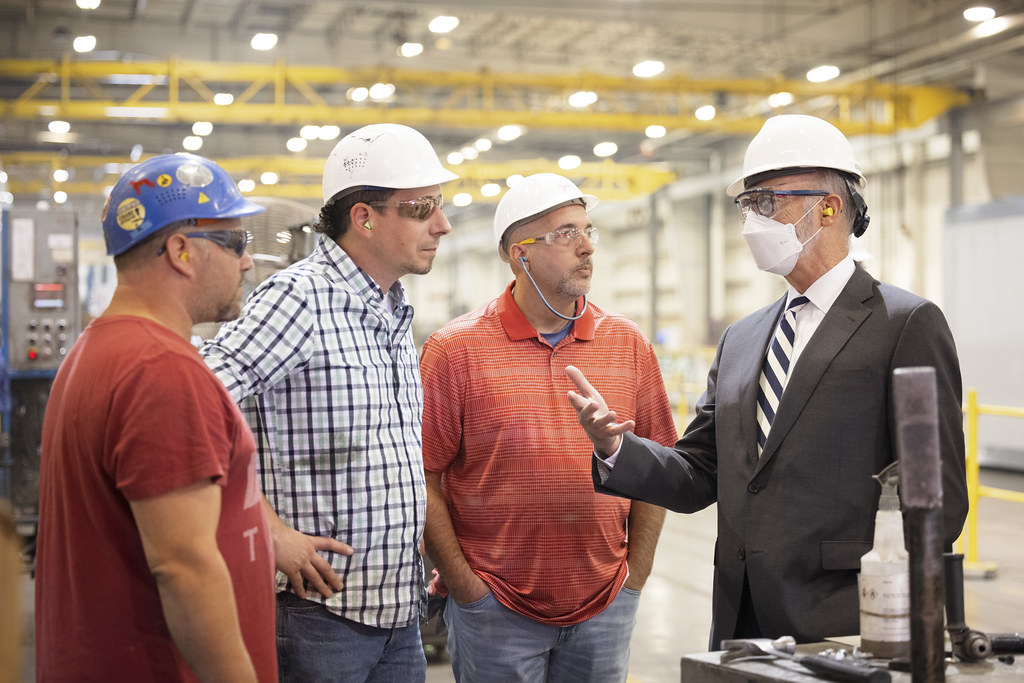
5. **Transportation Equipment**The transportation equipment industry, encompassing the production of automobiles, aircraft, and other vehicles, has long been synonymous with American industrial might. From Detroit’s storied automotive plants to aerospace hubs across the country, these factories provided high-wage jobs and were symbols of American innovation and engineering prowess. Their impact extended far beyond the factory gates, supporting vast networks of suppliers and contributing significantly to the national identity.
Despite its foundational importance, the transportation equipment sector was not immune to the broader trend of manufacturing decline. Over the forty-year period, it experienced its own set of challenges, from foreign competition to shifts in consumer demand and advancements in automation. While perhaps more resilient than some other sectors, the industry still saw a contraction in its workforce, albeit at a different pace.
Between June 1979 and June 2019, the transportation equipment industry experienced about half the rate of job loss compared to computer and electrical products. This suggests a more gradual, perhaps more managed, decline, indicating some success in adapting or retaining a core manufacturing base within the U.S. Still, the loss of jobs here reverberated deeply, especially in towns where large automotive or aerospace plants were the dominant employers, prompting significant economic restructuring.
By June 2019, employment in transportation equipment had fallen to 1,738,000 from 2,083,000 in June 1979, representing a decrease of 345,000 jobs. This substantial reduction, while less dramatic in relative terms than some other durable goods sectors, still represents a significant chapter in the story of America’s changing industrial landscape. It reflects a sector striving for efficiency and navigating global competition, ultimately leading to fewer opportunities for new blue-collar hires in the traditional sense.
Read more about: Beyond the Sticker Shock: Unveiling the Unmatched Value of the New Mercedes EQS and Its $120,000 Proposition
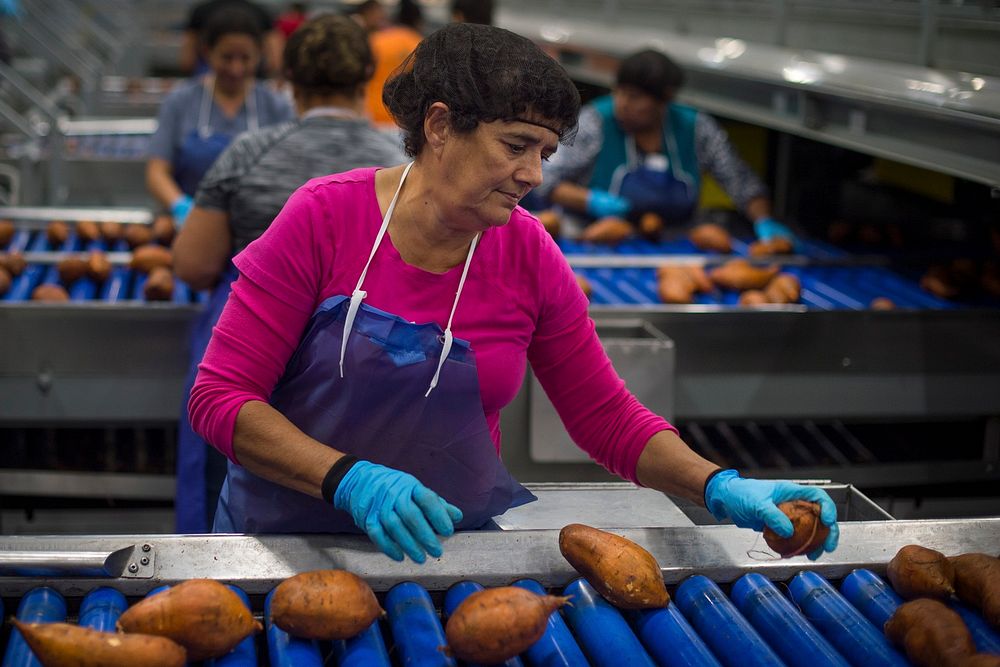
6. **Food Manufacturing**Amidst a sweeping narrative of industrial decline, the food manufacturing industry offers a fascinating counterpoint. From bustling bakeries to immense processing plants, this sector transforms agricultural bounty into the vast array of edibles that stock our grocery shelves and fill our plates. It’s an industry deeply rooted in local economies, often situated in agricultural heartlands, providing essential products and stable employment that felt, in some ways, insulated from the global forces impacting other manufacturing sectors.
Unlike many of its industrial counterparts that experienced significant contraction, food manufacturing actually saw an increase in its workforce over the past four decades. This growth is a testament to the enduring and ever-increasing demand for food products, coupled with advancements in processing and packaging that have expanded the industry’s capacity and reach. While automation has certainly played a role in efficiency, it hasn’t led to the widespread displacement of labor seen elsewhere.
From June 1979, when the industry employed 1,492,000 individuals, to June 2019, its workforce grew to 1,636,000. This increase of 144,000 jobs stands out as a beacon of growth in an otherwise challenging period for American manufacturing. This expansion likely reflects a combination of population growth, evolving consumer preferences for processed and convenience foods, and perhaps a degree of reshoring or domestic investment in food production for security and quality control reasons.
The story of food manufacturing underscores the nuanced nature of industrial change. While many traditional factories faded, those producing essential goods for direct consumption found pathways to adapt and even thrive. This sector’s continued vitality highlights its unique position within the broader manufacturing landscape, demonstrating that not all blue-collar industries followed the same trajectory of decline. Instead, it grew, offering a sliver of hope and a distinct economic blueprint for certain towns even as others grappled with loss.
While the story of America’s industrial transformation often highlights the colossal durable goods sectors, a deeper look into the less visible, yet equally vital, nondurable goods industries unveils a parallel narrative of adaptation and decline. These were the factories that produced the consumables of daily life—the clothes we wore, the paper we wrote on, the chemicals that fueled modern medicine, and the plastics that shaped our world. Their fate, intricately woven with the durable goods manufacturers, was similarly reshaped by the relentless forces of automation, globalization, and shifting consumer demands, leaving behind communities forever altered by their vanishing blueprints.
Our journey now takes us into these essential, often forgotten, corners of American manufacturing. We’ll peel back the layers of history to reveal how these sectors, once booming centers of employment, responded to the profound economic currents of the past four decades, and what their stories tell us about the enduring spirit of America’s blue-collar towns.
Read more about: Navigating the New Tax Landscape: 14 Key Changes Freelancers Must Know for 2025
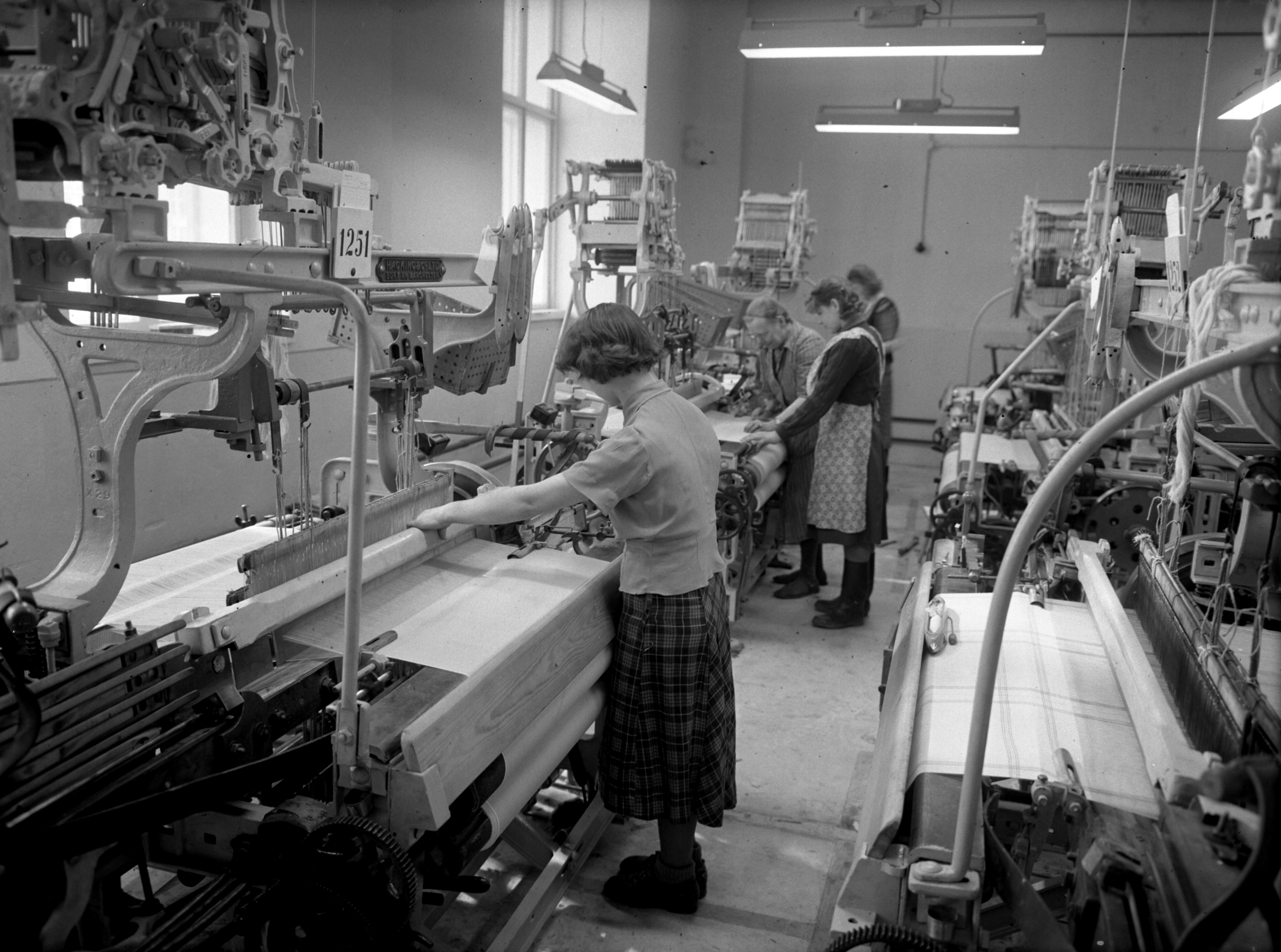
7. **Apparel and Textile Industries**Imagine the thrumming heart of a mill town, where the rhythmic clatter of looms and the whir of sewing machines filled the air, a constant symphony of production. For generations, the apparel and textile industries were not merely employers; they were the very fabric of communities, particularly across the American South and New England. These factories offered steady work, often to multiple generations of families, weaving together not just threads but livelihoods, dreams, and a deeply ingrained sense of purpose within their locales.
However, as the latter half of the 20th century unfolded, these vibrant hubs faced an unprecedented assault. The promise of cheaper labor in burgeoning global markets, coupled with advancements in shipping and communication, proved to be an irresistible economic magnet for corporations. The intricate networks of production, once rooted firmly in American soil, began to unravel, shifting to overseas locales where costs were dramatically lower.
The numbers bear grim witness to this profound exodus. Between June 1979 and June 2019, the American apparel and textile industries experienced one of the most drastic contractions in manufacturing employment. Their workforce plummeted from a robust 2,194,000 employees to a mere 334,000—a staggering loss of 1,860,000 jobs. This wasn’t a gradual fade but a rapid unraveling; a significant portion, 423,000 jobs, disappeared between June 1979 and January 1990 alone, with an even more precipitous drop of 1,351,000 jobs following in the subsequent period from January 1990 to June 2019.
The impact on towns built around these mills was nothing short of devastating. Entire communities found their economic foundations ripped out from under them, leaving a void that was almost impossible to fill. The specialized skills of mill workers and seamstresses, honed over decades, suddenly held little value in the transformed landscape. Today, the majestic brick structures of these once-bustling mills often stand as poignant, empty monuments, starkly reminding us of a way of life that, along with the jobs, has largely vanished from the American landscape.
Read more about: 15 Cutting-Edge Ways Automakers Are Weaving Recycled Materials into the Cars of Tomorrow
8. **Paper and Paper Products**Beyond the textile mills, another cornerstone of American industry, the paper and paper products sector, charted its own course through these turbulent economic waters. From the vast, steaming pulp mills nestled amongst abundant timberlands to the smaller converting plants that crafted everything from cardboard shipping containers to delicate stationery, this industry was a ubiquitous presence. It was intimately linked with America’s ravenous consumption habits and its sprawling natural resources, once seeming almost impervious to radical shifts due to its essential nature.
Yet, despite its deeply ingrained role, the industry experienced a consistent, if less publicly mourned, erosion of its workforce. This wasn’t the sudden, cataclysmic closure of dozens of factories in quick succession, but a persistent thinning of ranks driven by a potent cocktail of technological innovation and shifting demands. The digital revolution, with its audacious promise of a paperless future, undeniably began to chip away at the necessity for many traditional paper products, while heightened environmental awareness pushed for ever-greater efficiency in production processes.
The employment figures for paper and paper products reflect this steady contraction. Starting with 700,000 individuals in June 1979, the sector saw its workforce nearly halve, shrinking to just 365,000 employees by June 2019. This translates to a loss of 335,000 jobs over the four-decade span. While the proportional decline might not match the sheer scale of the apparel industry’s collapse, it nonetheless signifies a profound structural change within a sector that had long been a bastion of stable, often well-paying, blue-collar employment across numerous rural and semi-rural communities.
The closure or significant downsizing of a paper mill often left a gaping economic chasm, as these operations typically required substantial infrastructure and anchored a considerable local workforce. For these towns, the challenge extended beyond merely replacing lost jobs; it involved the formidable task of reimagining an entire economic identity, a future divorced from the grand industrial presence that had shaped their character for generations, a poignant testament to the relentless pressure to adapt in an increasingly digital world.
Read more about: Unleash Your Ride’s Potential: A 10-Step Guide to Designing Your Own Custom Car Wrap
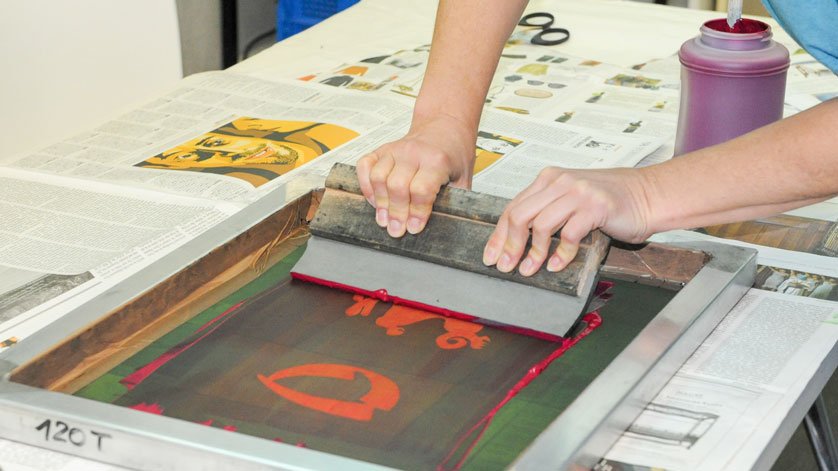
9. **Printing and Publishing**The venerable crafts of printing and publishing, once the very conduits of knowledge and communication, have undergone a breathtaking transformation in modern America. For centuries, from the bustling urban printing houses to the smaller town newspaper presses, these industries were vibrant centers of activity. They employed a diverse array of skilled individuals, from precise typesetters and meticulous proofreaders to powerful press operators, all working in concert to bring words, images, and ideas to life, enriching both cultural landscapes and local economies.
Then arrived the digital epoch, an era that fundamentally redefined how information was conceived, disseminated, and consumed. The internet, desktop publishing software, and the proliferation of digital media dramatically reduced the reliance on physical printed materials. This technological tsunami did not merely alter the industry; it initiated a sharp and, in many aspects, irreversible downturn for traditional employment pathways, as processes became increasingly automated and the demand for tangible copies waned with startling speed.
Curiously, the employment data for printing and publishing presents a nuanced picture. Initially, between June 1979 and January 1990, the sector actually experienced a gain of 328,000 jobs under the older SIC classification system, perhaps reflecting an earlier period of pre-digital expansion or statistical reclassification. However, the subsequent shift to the NAICS system in 1990 marked the definitive onset of a sustained decline. From January 1990 to June 2019, these industries shed a significant 479,000 jobs, ultimately reducing the total employment to 1,188,000 by June 2019 from its June 1979 level of 1,235,000. This culminates in an overall loss of 47,000 jobs across the entire forty-year span, yet the internal shifts were far more seismic than the net figure suggests.
For many communities, the quieted presses and the dramatic reduction in workforce size meant the loss of well-paying, highly skilled vocations that had long been cornerstones of local prosperity and intellectual life. The narrative of printing and publishing serves as a powerful testament to how rapidly technological innovation, while forging new frontiers of opportunity, can simultaneously dismantle established industrial structures, leaving behind a vastly altered landscape for those whose livelihoods were intrinsically tied to the printed word.
Read more about: Navigating the New Talent Economy: 12 Once-Essential Job Skills Managers Are De-emphasizing in a Skills-First World
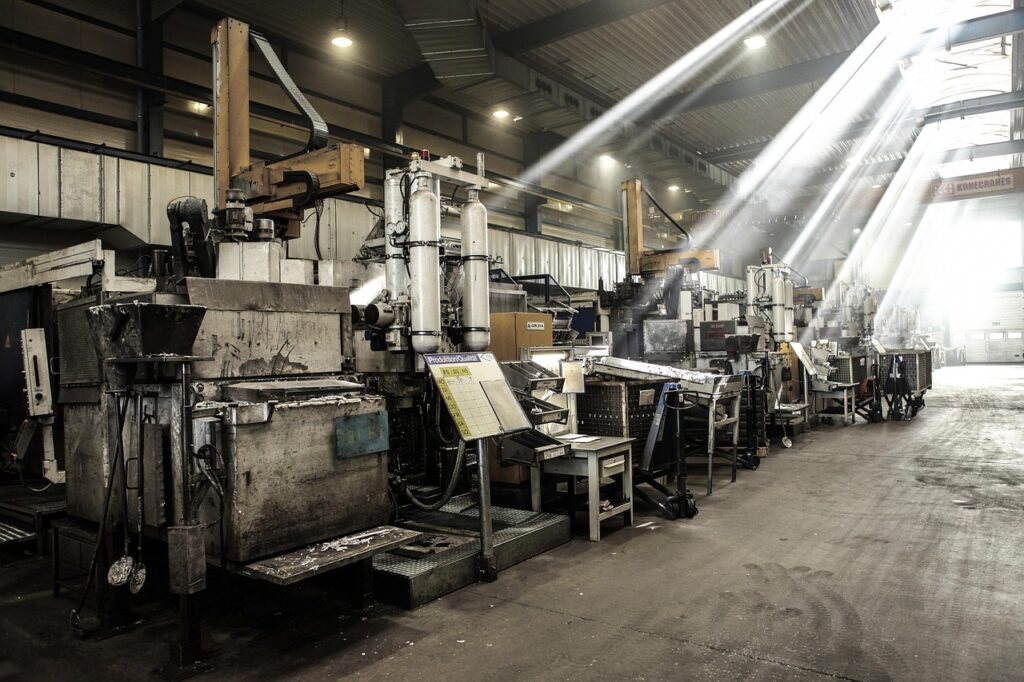
10. **Petroleum and Coal Products**The industries dedicated to petroleum and coal products have long occupied an unassailable position at the very heart of American industrial might, providing the indispensable energy that propels homes, factories, and vehicles across the nation. Vast, intricate networks of refineries, sprawling coke ovens, and specialized processing plants often dominated the skylines of particular regions, especially in energy-rich states or strategically located along vital transportation arteries. These monumental facilities represented colossal investments and fostered highly specialized, often high-paying, jobs, effectively serving as the economic anchors for the towns that grew up around them.
Despite their unequivocally critical role, these fundamental energy-related manufacturing sectors have, paradoxically, experienced a steady, though frequently underestimated, contraction in their employment footprint. This decline wasn’t necessarily driven by a diminishing demand for energy itself, but rather by profound internal transformations within the industries. Automation, relentless pursuit of operational efficiencies, and an ever-tightening web of environmental regulations collectively reshaped the workforce, shifting the balance from labor-intensive processes to more capital-intensive operations.
The human cost of this modernization is starkly visible in the employment data. From a workforce peak of 209,000 in June 1979, the petroleum and coal products industry saw its ranks diminish to 115,000 by June 2019, translating to a loss of 94,000 jobs. While these figures may not appear as numerically overwhelming as those from some larger sectors, the relative decline is substantial. Furthermore, the specialized nature of these roles, often clustered in distinct geographical areas, meant that each job loss had a concentrated and profoundly disruptive impact on the towns uniquely dependent on these massive facilities.
The enduring challenge for these communities remains the daunting task of economic diversification as the broader energy landscape continues its inevitable evolution. While the necessity for petroleum and coal products persists, the domestic employment footprint of their manufacturing has undeniably shrunk. This sector’s narrative offers a compelling microcosm of the broader shifts within America’s industrial base, where advancements in efficiency and growing environmental imperatives continually redefine the labor requirements of even the nation’s most vital, foundational industries.
Read more about: The 12 Most Impactful Celebrity Ventures in Sustainable Tech: How A-Listers Are Powering a Greener Future
11. **Chemicals**The chemicals industry stands as a formidable, yet often unseen, titan in the sprawling landscape of modern American manufacturing. It is the silent architect behind countless everyday products, synthesizing everything from life-saving pharmaceuticals and innovative plastics to essential fertilizers and advanced composite materials. Characterized by intricate scientific processes, rigorous safety protocols, and a profound demand for specialized expertise, chemical plants and sophisticated research facilities have historically been significant employers, offering highly skilled roles that required a unique blend of technical acumen and operational precision. These critical facilities frequently anchored regional industrial ecosystems, fostering a high-wage, technically proficient labor force.
Crucially, while undeniably facing the same overarching economic shifts as other sectors, the chemicals industry experienced a distinctive trajectory: a significant, yet notably less precipitous, job reduction compared to the more dramatic contractions observed elsewhere in manufacturing. This relative resilience can be attributed to several factors, including the highly specialized nature of its diverse product portfolio, the continuous, often R&D-driven, innovation inherent to the field, and the unwavering, broad-based demand for chemical intermediates across virtually every other modern industry. It is a sector that, even as it streamlined its workforce, largely retained its high-value production and intellectual capital within the U.S.
Between June 1979 and June 2019, the chemicals sector witnessed its employment base shift from 1,114,000 to 849,000, culminating in a loss of 265,000 jobs. This figure, while substantial in absolute terms, represents a more measured and managed contraction when contrasted with the devastating falls seen in the textile or electronics manufacturing domains. The industry strategically adapted by making substantial investments in advanced automation, meticulously focusing its efforts on higher-value and proprietary products, and adeptly navigating an increasingly complex labyrinth of regulatory environments. All these strategic adjustments inevitably influenced both the size and the highly specialized composition of its workforce.
The enduring impact on blue-collar towns, home to large chemical plants, often manifested not as an outright industrial disappearance, but rather as a profound metamorphosis. These facilities, while perhaps employing fewer individuals, frequently remained vital economic engines, contributing significantly through property taxes and supporting a smaller, yet exceptionally skilled, labor force. The chemical industry’s journey, therefore, showcases a sector that thoughtfully evolved and strategically diversified its output rather than simply vanishing, thereby presenting a distinct narrative within America’s grand tapestry of industrial transformation.
Read more about: Elevate Your Ride: Simple Secrets to Painting Your Brake Calipers Like a Professional

12. **Plastics and Rubber Products**The plastics and rubber products industry, a dynamic and pervasive force, burst onto the American industrial scene with incredible vigor in the mid-20th century. Responsible for fabricating an astounding array of items—from indispensable automotive components and robust construction materials to ubiquitous packaging and countless consumer goods—these factories quickly proliferated across the nation. They offered readily accessible employment opportunities, fueling the country’s burgeoning post-war consumer economy and rapidly becoming a new, vital source of blue-collar jobs, often establishing themselves in modern industrial parks rather than the traditional, older mill towns.
Intriguingly, in contrast to many struggling sectors, this industry initially experienced a period of robust growth. Between June 1979 and January 1990, it actually added 58,000 jobs, a testament to the surging ubiquity of plastics and rubber in nearly every facet of modern life. This era of expansion, however, proved to be a prelude to the same pervasive pressures of globalization and advanced automation that reshaped other industries. The mid-1990s emerged as a pivotal turning point, ushering in a subsequent period of modest but consistent decline, as production either gravitated overseas or became increasingly streamlined and automated within domestic facilities.
By June 2019, the employment in the plastics and rubber products sector had retreated to 737,000, a notable decrease from its June 1979 level of 828,000. This represents an overall loss of 91,000 jobs across the entire forty-year period. While this contraction is undeniably modest when compared to the dramatic collapses witnessed in industries like textiles, it unequivocally signifies a reversal of its earlier growth trajectory and a stabilization at a fundamentally lower employment base. The industry’s journey underscores how even initially booming sectors, once perceived as immune, eventually contend with the long-term, systemic forces that continuously reshape American manufacturing.
For the countless towns and regions where plastics and rubber plants once thrived, the experience was frequently one of strategic adaptation rather than outright abandonment. Companies embarked on aggressive drives for efficiency, meticulously streamlined their sprawling operations, and consolidated disparate production lines, which inevitably led to a reduction in entry-level positions. Nevertheless, many facilities managed to retain a crucial core of highly skilled workers. The plastics and rubber industry’s compelling story is a powerful illustration of how a sector, driven by diversified industrial demands, can indeed endure and remain vital, even as its broader employment footprint gradually, yet inexorably, shrinks—marking yet another intricate chapter in the evolving narrative of America’s resilient blue-collar workforce.
Read more about: Beyond the Surface: 14 Proven Strategies to Safeguard Your Car’s Undercarriage from Winter Road Salt
The stories of these twelve industries—from the sturdy fabricators of metal to the subtle weavers of textiles, and from the grand printers of words to the silent chemists of modern life—collectively paint a vivid, if at times melancholic, portrait of America’s industrial heartland across four transformative decades. They are profound narratives of relentless innovation, remarkable resilience, and the undeniable sorrow of profound loss, each echoing through the hushed silence of quieted factories and the resilient pulse of communities forever reshaped. As we cast our gaze towards the future, the enduring challenge remains to fully grasp the intricate legacy of this pivotal era and to ardently forge new, sustainable pathways for employment that profoundly honor the indomitable spirit of ingenuity and hard work that not only built but continues to define this remarkable nation. For though many of the old factories may now stand silent, the spirit of American industry, rooted deep in its people and its places, will, we believe, never truly be forgotten.

